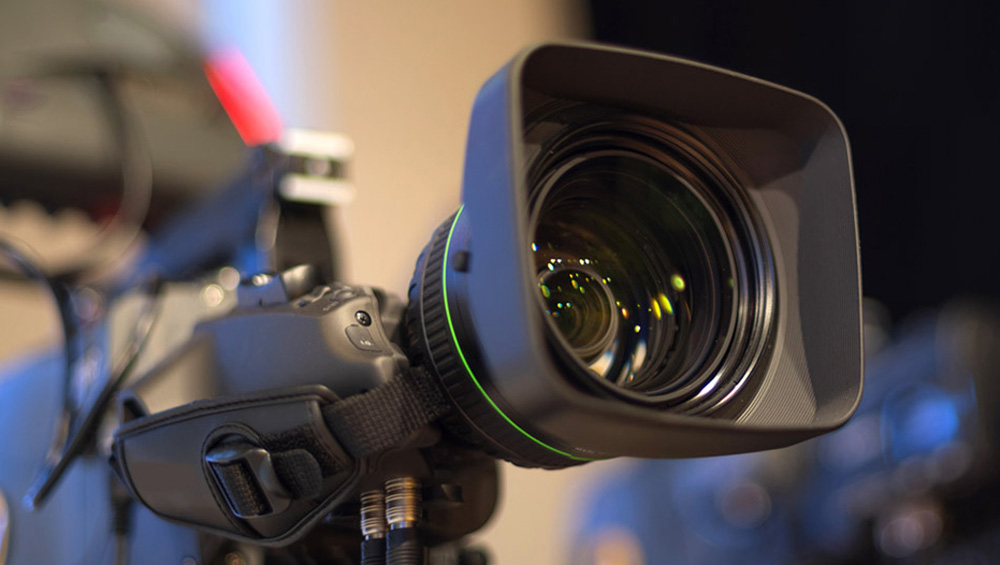
Station Groups Notch Lessons As Collaborations Proliferate

When a data team at ABC investigated contamination in drinking water around the country, it turned into a major collaboration between the data folks, journalists at the company’s owned stations, ABC News and National Geographic. The upshot was local reports as well as a documentary series called Our America: Trouble on Tap, which has also run on Hulu.
“Centralizing that very difficult and time-consuming discipline of data analysis makes good business sense, from an investigative journalist standpoint,” said John Kelly, director of data journalism, ABC Owned Television Stations. In addition to the contamination investigation, his group has delved into the numbers to uncover revelations about other thorny topics, such as police stop-and-search records and COVID testing.
Kelly made his remarks at a TVNewsCheck TV2025 conference panel session on joint news efforts between local station journalists and national news enterprises. During the session, which took place last Wednesday, the panelists revealed other examples of what they’ve accomplished, along with insights into the collaborative process and their learning curves.
The E.W. Scripps Co. has been undergoing a massive overhaul of its news operation, evolving a national news unit that works in tandem with local stations. “One of the end results of that is a significantly larger group of journalists on the street than we’ve had,” said Dean Littleton, SVP, local media at Scripps.
In Lafayette, La., Scripps is in the middle of the transition right now, moving from four reporters to more than a dozen, Littleton noted.
To handle the much more bountiful array of stories and ideas, Scripps has a tool in place that allows Scripps newsrooms to see what everyone is producing and planning. And there is greater communication between people locally and nationally, which has allowed Scripps to plan more effectively for coverage of hot issues — like the elimination of Title 42, which had held back immigration at the southern border during COVID.
“If there are six reporters involved, each one has a different angle. As a viewer at home, your experience is much more rich and robust than before,” Littleton said.
Fox focused on ease and simplicity when building up a collaborative effort between its Live Now streaming news service and local outlets, said Jeff Zellmer, SVP, digital operations at Fox Television Stations. The effort involved visiting stations to understand what tools they were using and making the approach more organized.
“Then, it’s all about ‘How do we make sure they care?’” Zellmer said, speaking of the local reporters. “At each station we have what we call our Live Now champions. There’s one person at a news station who communicates with our EPs.”
Sinclair’s The National Desk, which airs on about 70 of the company’s stations in two- and five-hour blocks, was built from the ground up. “We work with Avid to create a content bank, so all our assets are in one spot,” said Scott Livingston, SVP of news. “So, if I’m in Seattle or Washington or Baltimore, I can take a look at all my content that exists across Sinclair. We’ve also created a plug-in with Masstech that allows us to archive material.”
Ray Thompson, Avid’s senior director, partners and alliances, described a number of tools that allow news operations to work more quickly and collaboratively. One that’s grown out of the demand is called, appropriately, Collaborate. When stories are assigned, “it allows you to aggregate all the content that goes along with that story, and then track it as the story evolves,” Thompson said. “That allows everyone to be much more efficient.”
Nexstar Media Group is able to more deeply tap into what’s going on in Washington, D.C., through two of the company’s acquisitions: The Hill, and the Media General stations, which gave the company a D.C. bureau.
In addition to calling on journalists at The Hill to provide insights for station news reports, Nexstar also does some polls with the outlet. Last year there were about 45 of them.
Since absorbing Media General, the Nexstar D.C. bureau has doubled in size to nearly 20 people. It typically brings in 40-45 feeds, which are then spun back out to the TV stations, said Jerry Walsh, the company’s SVP of local content development. “We’re now set up so that [government] hearings can be streamed live on all our platforms if digital producers want them.” And stations also have the opportunity to localize the content.
Needless to say, there have been lessons learned as all of the collaborations have gathered momentum. Sinclair’s Livingston explained that the company’s newsrooms understood the reasons why The National Desk was rolling out. “But the breakdown was in the training,” he said. “We realized that the workforce needed to be really comfortable, not just with the concept, but we assumed some things— [for example] that people would know how to use Avid or Masstech. So, we added a couple of positions to train the workforce.”
At Nexstar, there was a realization that the company needed to make sure there was a proper support structure for the teams, and that they took the time to build up the procedures, Walsh said. What’s more, there’s a greater focus on understanding the unique strengths of different journalists and what they can bring to the table.
“Change management is hard for anybody,” noted Scripps’ Littleton. “I’ve been blown away with the employees’ ability to understand the ‘why.’ The issue has been more about connecting the ‘why’ to what they do and how it changes what their job looks like and their responsibilities.”
After working with people at a station, those in charge of the training can’t just move on to the next station and assume everything will be OK. “As [station personnel] advance, they run into speed bumps. So, you have to listen and adjust based on where they are,” Littleton said.
Read more coverage of TV2025 here.
































Comments (0)